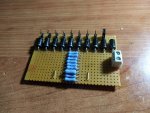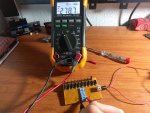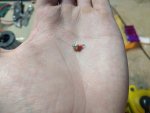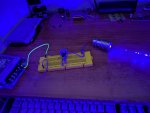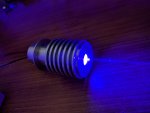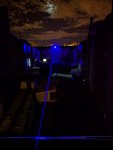Benm
0
- Joined
- Aug 16, 2007
- Messages
- 7,896
- Points
- 113
Well, if you are building the dummy load from scratch i'd go for 1n 540x diodes as they can handle 3 amps and are still very cheap.
Some designs have been proposed with more powerful diodes as well, but they require to be mounted to a heatsink - not really a problem, but if you plan on staying at the 'around 1 amp' range probably overkill.
There is also the resistor. If you want it at 1 ohm, you could just put 10 standard metal film 10 ohm resistors in paralel. This would be fine up to 2 amps continous operation. You could also use 20 pcs of 20 ohm resistors in there, making it reliable up to (almost) 3 amps, same limit as the diode.
Actually putting a load of resistors in paralel has advantages: they are often cheaper than high power resistors even if you need 10 or 20 of them, and they have low inductance. Cheap power resistors are often wire-wound which work fine for DC, but present a pretty inductive load to the driver under test.
There are low-inductance high-power resistors too, with heatsink mounting, but those only make sense when you want a dummy load that handles currents of 5 amps or so, where the diodes would also require external heatsinking.
Some designs have been proposed with more powerful diodes as well, but they require to be mounted to a heatsink - not really a problem, but if you plan on staying at the 'around 1 amp' range probably overkill.
There is also the resistor. If you want it at 1 ohm, you could just put 10 standard metal film 10 ohm resistors in paralel. This would be fine up to 2 amps continous operation. You could also use 20 pcs of 20 ohm resistors in there, making it reliable up to (almost) 3 amps, same limit as the diode.
Actually putting a load of resistors in paralel has advantages: they are often cheaper than high power resistors even if you need 10 or 20 of them, and they have low inductance. Cheap power resistors are often wire-wound which work fine for DC, but present a pretty inductive load to the driver under test.
There are low-inductance high-power resistors too, with heatsink mounting, but those only make sense when you want a dummy load that handles currents of 5 amps or so, where the diodes would also require external heatsinking.




